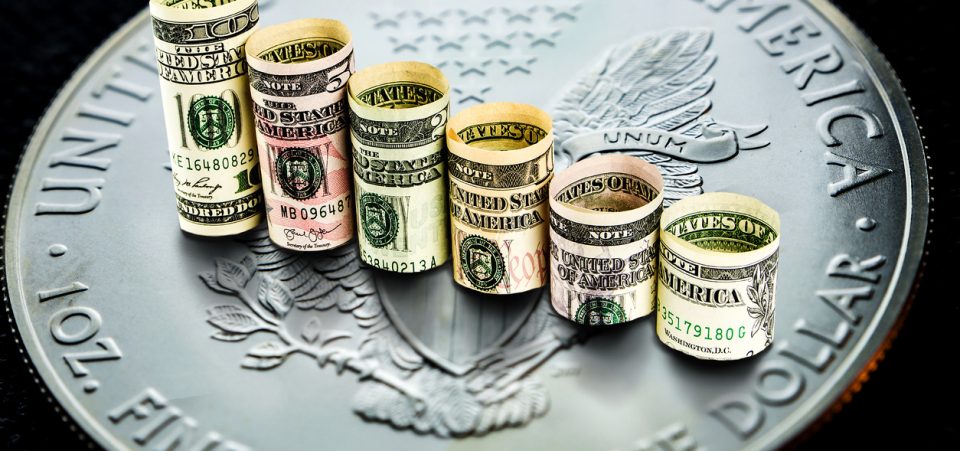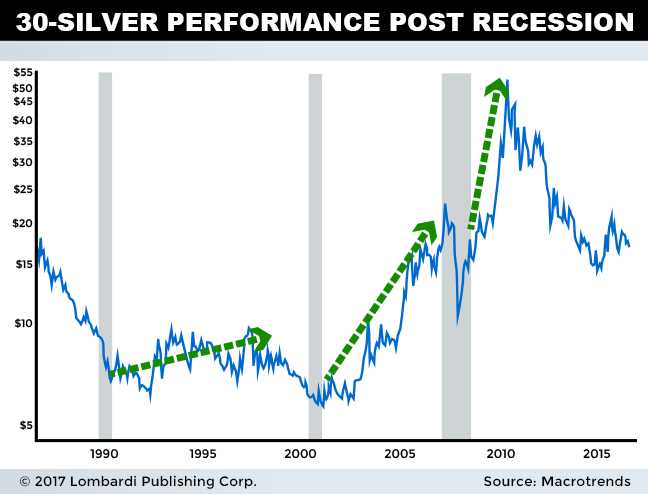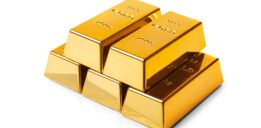Moribund Silver Prices Have Investors Wondering When the Breakout Arrives
Silver just can’t catch a break. With a decent economy (for now), short supply, and a market starved for cheap assets, silver prices still can’t move the needle. Some investors might even be tempted to throw in the towel and chase other opportunities. While we can’t ensure silver prices have bottomed here, prices look very compelling.
One of the main reasons is cost of production. With silver prices per ounce trading around $16.50, there might be another $3.00 or $4.00 that silver can sink before production starts grinding to a halt. The biggest silver producers generally have all-in sustaining costs (AICS) around the $10.50 – $12.50 mark, with the 2017 Q1 average sitting at $11.50, up 8.9% from the 2016 Q4 AISC of $10.56. (Source: “Silver Miners’ Q1’17 Fundamentals,” MiningFeeds, May 29, 2017.)
Also Read:
Precious Metal Analysis: Keep Gold and Silver on Your Radar in 2017
Silver Price Forecast for 2017
In other words, silver prices can only travel so low before it starts to impact supply. This, in turn, will affect price. Silver supply has been falling behind for at least a decade. According to numbers supplied from Thomson Reuters GFMS, a massive 30,615-tonne shortfall in silver supply has built up since 2006. That’s about 114% higher than the already-record silver production seen in 2015. It’s also around 2.5-times larger than the current holdings of the giant iShares Silver Trust (ETF) (NYSEARCA:SLV). (Source: “Silver Deficit Shock Will Stun the World. Massively,” BullionVault, April 27, 2016.)
The deficits have only increased in 2017.
Insatiable demand continues apace for industrial silver demand. All types of electronics, cell phones, and solar panels require it. There is no substitute, at least with anything economical. With silver prices today flat-to-down for five years running, miners aren’t exactly busting down the door to add new supply.
Look for shortfalls in demand to continue until price firms up. Miners will continue to lock up high-grade supply until prices becomes more favorable. This will put a damper on excess supply.
Unlike tech and other inflated stocks, silver has an impenetrable floor of support right near today’s price.
Slowing Economic Growth Negative for Silver Prices?
In theory, it should be. Although silver is both a precious and industrial metal, it predominantly trades off industrial fundamentals during economic expansions. Its safe-haven price movements come later, when investors seek shelter from uneasy market and geopolitical conditions.
In any case, a slowing U.S. and world economy might not affect silver prices as much as you think.
According to The Silver Institute’s World Silver Survey 2017, only 30% of mined silver came from primary silver mines. A full 70% was produced as a secondary byproduct from other metal production. In fact, more silver production came from lead/zinc mines (35%) than from primary mines themselves! (Source: “World Silver Survey 2017,” The Silver Institute, last accessed June 29, 2017.)
Therefore, even if a slowing world economy acts as a drag on demand, silver production should slow as copper/lead/zinc metal production slows. This should keep the supply/demand imbalance skewed towards deficit for the intermediate term.
If we look at the silver price history over the past 30 years, its relative strength after recessionary periods stands out. Clearly, silver tends to do well at the start of new business expansions for a couple of reasons. First, demand starts to gain traction as industrial output speeds up. Second, investor demand is high as crashing stock markets scare people away.
While we believe the end of America’s business expansion is nearing, the time to purchase silver is approaching. That is, the best time to buy silver is actually when the economy is in a full-blown recession, when prices are most depressed. When the recession ends, paving the way for an expanding economy, silver is historically a great asset to own. This might be especially true in this cycle, since it’s one of the most undervalued assets around. It’s been completely forgotten and left for dead by Wall Street.
A recession could also send a much-overvalued stock market reeling. If things get bad enough, the Federal Reserve will likely announce some sort of mega stimulus package that dilutes fiat currencies further (expands the monetary base). In both cases, silver’s luster as a safe-haven asset is enhanced and could partially or fully offset the slowdown in industrial demand. Remember, prices can’t go much lower than $12.00-$13.00/ounce before production falls off a cliff. Call it the “silver put.”
Our silver price forecast calls for higher prices based on the reasons stated above. Primarily, a slowdown in silver production byproducts will result in a general economic slowdown, thus keeping supply in deficit. Also, safe-haven attributes will likely shine through if the economy hits the skids and the stock market tanks.
While it may be a little early, silver is about to make noise again. Many investors just don’t know it yet.







